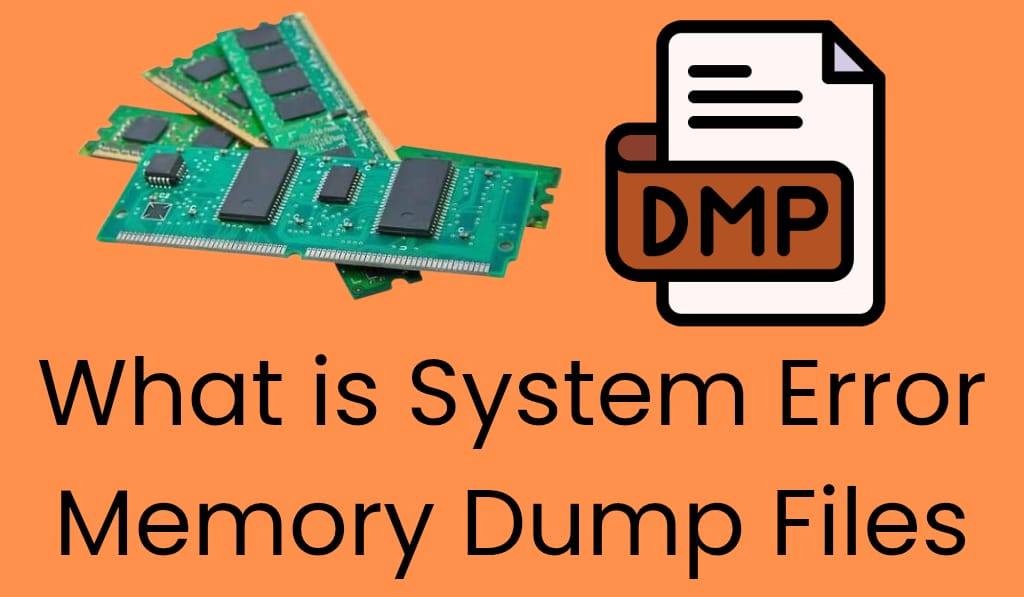In this article, I am telling you what is System Error Memory Dump Files are, also what caused the issue, which drivers were in memory at the time of the crash, and what processes were running.
Understanding System Error Memory Dump Files
When you experience a sudden crash on your Windows computer or a Blue Screen of Death (BSOD), these systems produce what are called system error memory dump files. System failures cause the OS to generate error memory dumps, which in turn record the memory state at the time of the issue. We see this as a tool that both power users and IT professionals use to determine root causes of issues. Rather than trying to guess what caused your PC to crash or reboot, you can use these dump files for an exact diagnosis of the problem.
Read More: How to Fix Windows 10 Memory Leak
Types of System Error Memory Dump Files
Windows reports various types of system error memory dump files, which depend on what is set in your system. Here are the main ones:.
- Full Memory Dump: This saves all system memory at the time of the crash.
- Kernel Memory Dump: This is of the memory used by the Windows kernel and drivers.
- Small Crash Report: It is a lightweight file that has the most basic crash info.
- Automatic Memory Snapshot: What is saved is determined by the system configuration.
Each kind of system error memory dump has its application. We see that small dumps are easy to analyze, and although full dumps give you a complete picture, they take up more space.
Read More: How to Check RAM Usage on Mac
Location where System Error Memory Dumps are saved
If you are to view system error memory dump files, that is usually in the following locations:.
- C\ WINDOWS\MEMORY.DMP (for full memory dumps).
- C\Windows\ Minidump folder (for small dump files).
These sets can be changed in the Windows advanced system settings, but the default paths work for most users.
What is the value of System Error Memory Dump Files?
System error memory dump files are for troubleshooting. They help developers, technicians, and even Microsoft support teams identify issues. In these we see:.
- Identify faulty drivers
- Detect hardware malfunctions
- Analyze software conflicts
- Improve system stability
Through the use of tools like WinDbg or third-party software, which may include system error memory dump files and the reports they produce. Also, you can use these tools to review the logs, which may contain clues.
Do You Delete System Error Memory Dump Files?
Many users ask if it is best to keep or get rid of system error memory dump files. It depends on your needs.
- Keep Them: If you are having many crashes and are going to do some troubleshooting.
- Delete Them: If you don’t have any issues with your PC’s performance, and you want to free up space.
In many cases, system error memory dump files will take up a great deal of storage space, which may be as large as full dumps, and thus, it is safe to delete them after the issue is resolved.
How to Manage System Error Memory Dump Files
You may manage system error memory dump files by following:.
- Disk Space Cleanup Tool: Go into Windows Disk Cleanup and choose “System Error Memory Dump Files” to get rid of them.
- Storage Sense: It turns on automatic removal of dump files.
- Manual Deletion: Go to the dump file location and remove them there (admin rights required).
Conclusion
System errors, which cause memory dumps, are what we use to identify and resolve issues with system crashes. We put in these reports, which include details of what went wrong, which in turn helps us to prevent recurrence. At the same time, though, we should note that they may fill up a great deal of space. If your system is running stable, you can go ahead and get rid of them, but if you are in the middle of a tough issue that you are trying to sort out, having these reports at hand is very helpful.
Leave a Reply